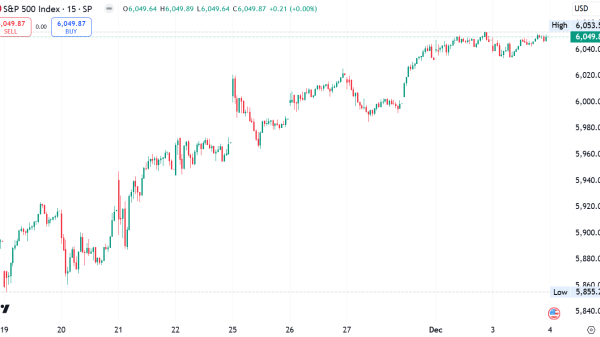Top Option Trading Indicators for Maximum Profit – Explained
Have you ever wondered what are the top option trading indicators that are crucial for gaining maximum profit in the market lately?
Why should you learn all about the technical analysis tools that are, without a doubt, one of the most effective ways to assist traders in increasing their incomes in the long term?
Whether you are experienced or new, motivation is key to success in trading. Mastering the tools is crucial for success in this field, regardless of your experience level.
The reason is simple – with the proper help of the top option trading indicators, almost anyone can become an excellent trading professional.
Well, let’s see what indicators to use for options trading and all the essential stuff about each of them in particular! Here are the top option trading indicators especially for you!
Bollinger Bands
Bollinger Bands represent an extremely popular indicator that numerous options traders frequently use to gauge market volatility. These particular and well-known bands widen with increasing volatility and narrow once the volatility decreases.
When prices reach the upper band, it means the asset is overbought. When prices are close to the lower band, it might be oversold.
What could indicate a potential reversal?
One way to tell if a security’s price might change direction is if it moves outside these bands. In that way, options traders are allowed to adjust all of their trading strategies well.
For instance, a breakout above the upper band could prompt a trader to adopt a long put or a short call strategy. Consider buying or selling options if the price falls below the lower band.
Generally, experts advise individual traders to sell options as soon as the volatility is high and prices are elevated. They should buy its options when volatility is low because they will be cheaper.
Relative Strength Index (RSI)
The Relative Strength Index, known as RSI, represents a momentum indicator. It compares recent gains and losses within a specific period. The main reason is to measure the velocity and shifts in a security’s price movements.
The measurement of the security’s price movements is crucial for the identification of overbought and oversold states.
From what range does the RSI value stretch?
If you’re interested in knowing the range of the RSI values, they stretch from 0 to 100. Values over 70 typically signal overbought conditions, while those under 30 suggest oversold conditions.
Remember, the Relative Strength Index is more effective for individual stocks than indices. The main reason is that stocks often exhibit overbought and oversold conditions when comparing them to indices.
Option options on highly liquid, high-beta stocks are more than ideal for short-term trading strategies established on RSI signals.
Money Flow Index (MFI)
The Money Flow Index (MFI) is a key indicator for options trading that all professional traders should understand. It stands for a momentum oscillator that integrates both price and volume information.
Very often, this MFI is referred to as the volume-weighted RSI. MFI is responsible for tracking the monetary inflows and outflows from an asset over a set timeframe.
That timeframe is typically 14 days. It is similar to the barometer that exists for trading momentum.
What values indicate overbought and oversold assets?
Values above 80 indicate an overbought asset. On the other hand, those below 20 indicate it’s oversold. The MFI’s utilization of volume data makes it more suitable for options trading on individual stocks rather than indices.
This is especially the case regarding long-term strategies. Experts recommend that individual traders sell options when volatility is high and prices are high.
Divergences between MFI readings and stock prices can foretell a potential trend reversal.
Intraday Momentum Index (IMI)
The Intraday Momentum Index (IMI) is a valuable and useful analytic tool for traders specializing in rapid, daily trades.
It fuses intraday candlestick patterns with the mechanics of the RSI to provide a range for determining overbought and oversold levels during the trading day.
With the proper employment of the IMI, all kinds of traders can identify opportune moments.
The main reason is to properly engage in bullish transactions during upward market corrections or bearish transactions once prices temporarily peak in a downward trend.
What is crucial for traders to monitor in IMI?
Traders who are using the Intraday Momentum Index should understand that.
Traders must monitor the directional trends in price actions since momentum indicators often produce overbought or oversold signals during strong trends.
To effectively compute the IMI, one must divide the total of gains on up days. It can be done with the aggregation of both up and down days. After that, multiply the result by 100, expressed as ISup ÷ (ISup + ISdown) × 100.
Remember that numerous traders typically analyze fourteen days, which may vary. Once the IMI gets above 70, it suggests the stock is overbought. If it goes below 30, it’s likely oversold.
Open interest (OI)
Open interest (OI) is among the best indicators for options trading. It reflects the total number of open or unresolved contracts in options trading. OI doesn’t directly point to a specific upward or downward trend.
Nonetheless, the famous OI indicator provides traders with clear insights into the robustness of an existing trend. Rising open interest suggests an influx of new capital.
Thus, it supports continuing the current trend, whereas decreasing OI signals a diminishing trend.
Supertrend indicator
The supertrend indicator is widely regarded as an exquisite indicator for options trading. The core element of Supertrend is derived from the Average True Range (ATR), which is similar in function to MACD and moving averages.
It incorporates two components, usually utilizing an ATR setting of 10 periods and a multiplier of 3. Regarding the famous day trading, the Supertrend indicator is very useful, especially when traders manage to apply it to a fifteen minute chart.
The main thing that makes Supertrend indicator special in comparison to other indicators is its remarkable capability to provide a variety of buy and sell signals for options traders.
This feature makes it an essential tool in options trading, securing its reputation as one of the top indicators in the industry.
The Put-Call Ratio (PCR)
The Put-Call Ratio (PCR) Indicator scales trading activity. It does so with the comparison of the volume of put options to call options. Instead of concentrating on the PCR’s exact value, changes in the ratio may reveal shifts in market sentiment.
A ratio above one, where call buying surpasses put buying, gives traders insight into the market’s bullishness. Contrariwise, a ratio below one, where put volume exceeds call volume, trading signals bearishness.
Often, traders utilize the PCR as a contrarian indicator, deciding to trade contrary to existing market trends in expectation of an imminent reversal.
What Sets the Price of an Option?
The price of a particular option is determined by several factors: the price of the underlying asset, strike price, time until expiration, interest rates, and volatility. Various models can estimate these prices.
These are just some of the best technical indicators for option trading. Now, let’s learn more about the risk measufres used with options, and more, shall we?
What Are the Risk Measures Used with Options?
Options risks are quantified by four metrics known as “the Greeks”. They are the following ones:
Delta
Theta
Gamma
Vega
Each of these risk measures measures extremely diverse dimensions of risk.
What are the technical indicators useful for?
Technical indicators frequently assist short-term traders in identifying:
The extent of movement (how far?)
The direction of the movement (which direction?)
The duration of the movement (for how long?)
What influences options trading?
Options trading is markedly influenced by time decay. It emphasizes the importance of holding duration. Stock traders can hold indefinitely. However, options traders are limited by an option’s expiration.
Therefore, momentum indicators, essential for identifying overbought and oversold conditions, are especially valuable in options trading due to these time constraints.
Let’s examine various key indicators, including momentum-based and others, used by options traders.
What is the best indicator for intraday option trading?
Ultimately, it’s crucial to note that even though there are fantastic indicators in general, the best indicator for intraday options trading is the Intraday Momentum Index.
It’s, without a doubt, among the most powerful tools for high-frequency option traders focusing on daily market fluctuations. It integrates intraday candlestick patterns with the mechanics of the Relative Strength Index (RSI). It offers a similar range that’s ideal for day trading.
This index is particularly useful for traders who are eager to identify overbought and oversold conditions throughout the trading day, helping them make well-informed decisions.
Conclusion
In essence, without utilizing key option trading indicators such as the following ones:
RSI
IMI
MFI
Bollinger Bands, traders would miss opportunities to maximize market profits. These particular indicators are essential for daily trading activities.
Many professional traders regard them as top-tier trading tools because they provide crucial insights into market conditions.
They are also aiding traders in recognizing once assets are overbought or oversold. Remember, these top option trading indicators are invaluable for making knowledgeable trading decisions.
Simplifying and effectively applying these tools can significantly improve trading strategies and profitability in the ever-changing options market.
The post Top Option Trading Indicators for Maximum Profit – Explained appeared first on FinanceBrokerage.


































